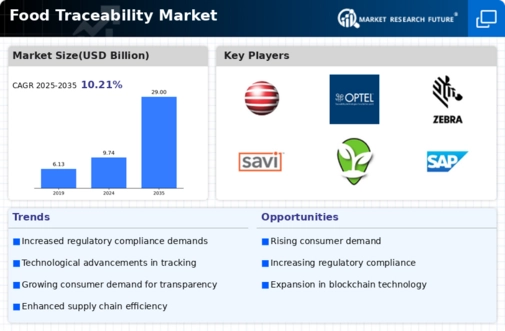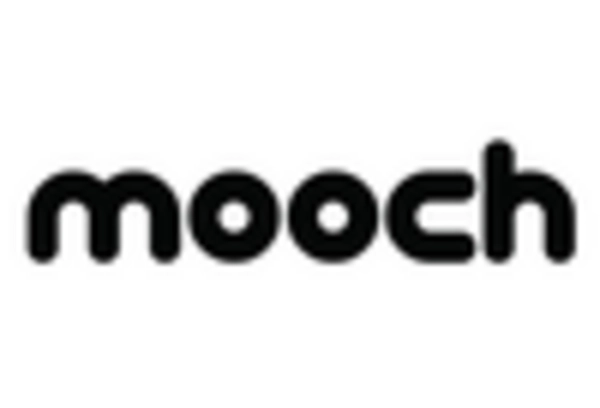The Food Traceability Market is currently characterized by a dynamic competitive landscape, driven by increasing consumer demand for transparency and safety in food supply chains. Key players such as IBM (US), SAP (DE), and Oracle (US) are at the forefront, leveraging advanced technologies to enhance traceability solutions. IBM (US) focuses on blockchain technology to provide immutable records of food products, thereby ensuring authenticity and safety. SAP (DE) emphasizes integration with existing enterprise resource planning systems, facilitating seamless data flow across the supply chain. Oracle (US) is enhancing its cloud-based solutions to offer real-time tracking and analytics, which are crucial for compliance and operational efficiency. Collectively, these strategies indicate a shift towards more integrated and technology-driven solutions in the market.
The competitive structure of the Food Traceability Market appears moderately fragmented, with numerous players vying for market share. Key business tactics include localizing manufacturing and optimizing supply chains to enhance responsiveness and reduce costs. Companies are increasingly focusing on partnerships and collaborations to expand their technological capabilities and market reach. This collective influence of major players is shaping a landscape where innovation and operational efficiency are paramount, potentially leading to a consolidation of market power among the most technologically adept firms.
In August 2025, IBM (US) announced a partnership with a leading agricultural cooperative to implement its blockchain-based traceability solution. This strategic move is significant as it not only enhances the cooperative's supply chain transparency but also positions IBM as a leader in agricultural traceability, tapping into a growing sector that demands rigorous safety standards. The collaboration is expected to set a benchmark for future initiatives in the industry, showcasing the potential of blockchain technology in ensuring food safety.
In September 2025, SAP (DE) launched a new module within its Business Technology Platform aimed at improving food traceability through enhanced data analytics. This development is crucial as it allows food producers to gain deeper insights into their supply chains, thereby enabling proactive decision-making. By integrating advanced analytics with traceability, SAP is likely to strengthen its competitive position, appealing to businesses seeking to enhance operational efficiency and compliance with regulatory standards.
In October 2025, Oracle (US) unveiled an upgraded version of its cloud-based traceability solution, which incorporates artificial intelligence to predict supply chain disruptions. This innovation is particularly relevant in today's fast-paced market, where agility and foresight are essential. By leveraging AI, Oracle not only enhances its product offering but also addresses a critical need for businesses to anticipate challenges in their supply chains, thereby reinforcing its market position.
As of October 2025, the Food Traceability Market is witnessing trends that emphasize digitalization, sustainability, and the integration of artificial intelligence. Strategic alliances among key players are increasingly shaping the competitive landscape, fostering innovation and enhancing technological capabilities. The evolution of competitive differentiation appears to be shifting from traditional price-based competition towards a focus on innovation, technology adoption, and supply chain reliability. This transition suggests that companies that prioritize these aspects are likely to emerge as leaders in the Food Traceability Market.

















Leave a Comment